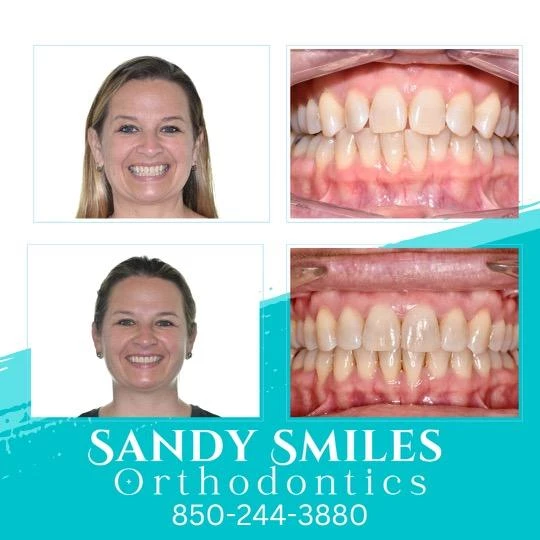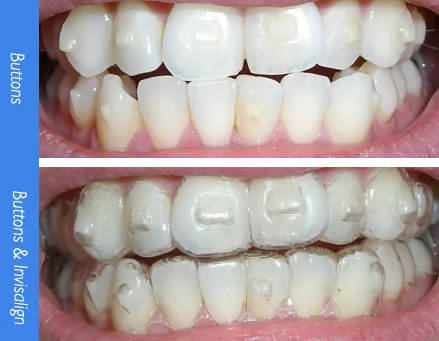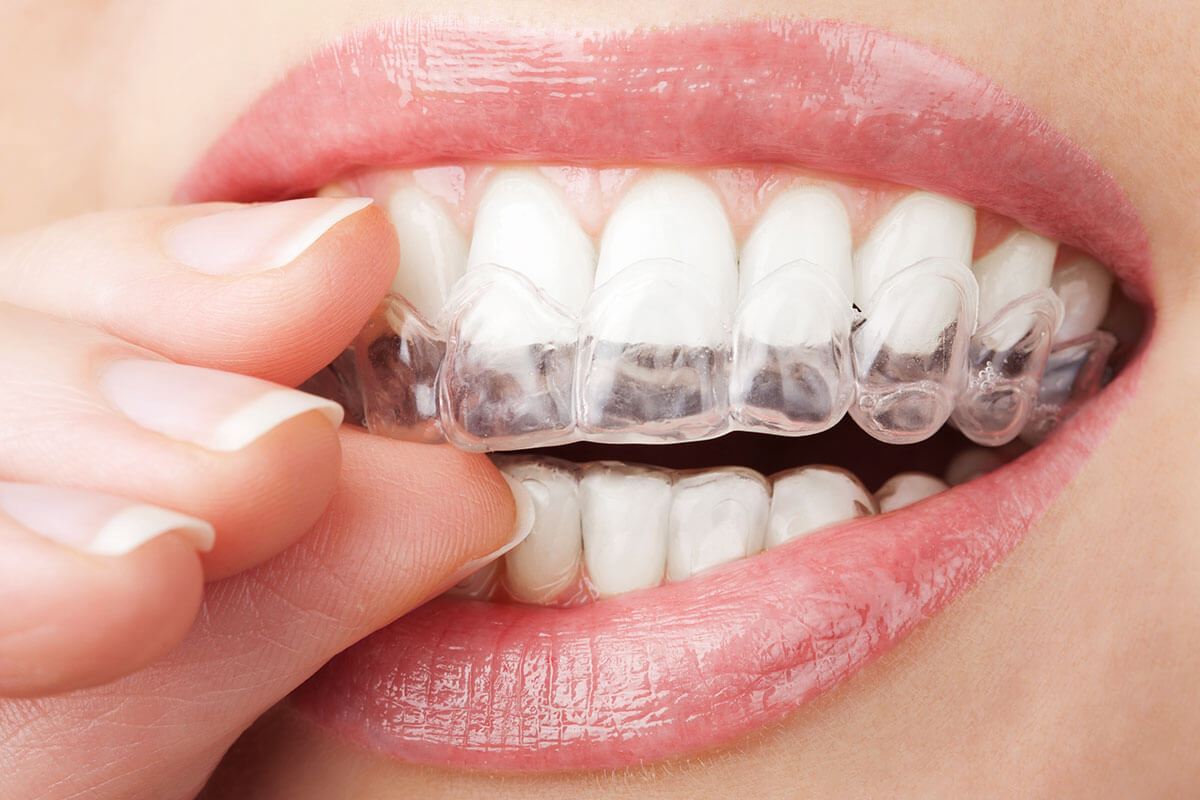How Invisalign Works: Your Overview to Clear Aligners and Their Effectiveness
Invisalign vs. Traditional Braces: Which Option Is Right for You?
When thinking about orthodontic therapy, the option between Invisalign and standard dental braces presents a number of essential variables that merit careful assessment. Invisalign supplies a discreet alternative with removable aligners, while typical dental braces offer a more noticeable yet effective solution for extreme imbalance. Each option encompasses unique benefits and downsides associated with visual appeals, comfort, therapy period, and price. Comprehending these subtleties is vital for making a notified decision that aligns with your personal preferences and lifestyle. The concern continues to be: which alternative will ideal meet your orthodontic needs and expectations?
Overview of Treatment Alternatives

In contrast, typical dental braces are composed of steel brackets and cords that are adhered to the teeth. This approach uses constant stress gradually to attain positioning. While efficient for complicated orthodontic issues, traditional dental braces need normal check outs for changes and can posture difficulties in maintaining oral health due to the problem of cleaning up around braces and cables.
Both options have their advantages, and the selection frequently hinges on particular oral conditions, lifestyle preferences, and person conformity. Inevitably, getting in touch with an orthodontic specialist is important for establishing the most suitable treatment plan tailored to individual demands. Understanding the nuances of each option can dramatically affect the overall success of orthodontic treatment.
Aesthetic Considerations
A significant factor affecting the selection between Invisalign and traditional dental braces is the visual allure each treatment offers. Invisalign aligners are crafted from clear plastic, making them practically invisible when put on.
In comparison, traditional dental braces consist of metal brackets and cables, which can be extra visible. While developments in orthodontic modern technology have actually led to the development of smaller sized brackets and tinted elastics, standard braces still keep a more noticeable account. For some people, the exposure of dental braces might discourage them from seeking needed therapy.
Ultimately, the selection between Invisalign and conventional dental braces might depend upon personal preferences regarding looks. Clients that prioritize discretion typically lean toward Invisalign, while those who are less concerned about presence might select typical braces. Recognizing the aesthetic implications of each alternative is critical for making an informed decision that straightens with one's way of life and preferences.
Convenience and Convenience

In regards to ease, Invisalign aligners are removable, allowing people to enjoy their preferred foods without restriction and preserve optimum dental health. Brushing and flossing are simplified, as the aligners can be secured during these regimens, whereas conventional braces require careful navigating around brackets and cables.
In contrast, standard dental braces demand normal adjustments, making them much less hassle-free for those with hectic schedules. In general, the convenience and benefit of Invisalign make it an enticing option for numerous people seeking orthodontic therapy.
Therapy Duration and Efficiency
While both Invisalign and standard dental braces work in dealing with dental misalignments, the duration of treatment can differ substantially between both options. Typically, Invisalign treatment can take anywhere from 12 to 18 months, relying on the complexity of the situation. The clear aligners function by gradually shifting teeth right into their desired placements, and regular follow-ups with an orthodontist aid make certain development remains on the right track.
In contrast, typical dental braces commonly call for a longer commitment, typically ranging from 18 months to 3 years. This is due to their set nature and making use of wires and brackets, which can be much more reliable for serious imbalances and complicated instances (Invisalign). The therapy performance of traditional braces is well-documented, as they enable precise adjustments and better control over tooth motion
Inevitably, the option between Invisalign and standard dental braces may depend upon both the expected treatment period and the details dental concerns available. Consulting with an orthodontist is essential, as they can provide tailored referrals based on specific demands, making sure the picked technique straightens with wanted outcomes and timeframes.
Price Comparison and Insurance Coverage Alternatives
Cost plays a substantial role in the decision-making procedure for people considering orthodontic therapy, whether going with Invisalign or standard braces. Typically, the cost of Invisalign varieties from $3,000 to $8,000, while typical dental braces generally set you back in between $2,000 and $6,000. Elements affecting these expenses include the complexity of the situation, the duration of therapy, and geographical location.
Insurance policy coverage can significantly affect out-of-pocket expenditures. Lots of oral insurance plans provide partial protection for visit our website orthodontic treatments, yet the specifics can vary extensively. It is vital for patients to examine their insurance plan to figure out the level of protection for either option. Usually, standard dental braces might be more frequently covered by insurance strategies contrasted to Invisalign, which some insurance providers classify as a cosmetic procedure.
Additionally, several orthodontic techniques use adaptable payment plans, making both treatment alternatives extra accessible. Patients must make inquiries concerning potential financing choices and discounts my link for upfront payments. Assessing the complete price, consisting of insurance policy benefits and payment plans, is vital for making an informed choice that straightens with both aesthetic choices and budget plan considerations.

Final Thought
In summary, the choice in between Invisalign and traditional braces hinges on multiple variables, including aesthetic preferences, convenience, therapy duration, and cost. Invisalign supplies a very discreet, detachable alternative that promotes oral hygiene and nutritional flexibility, while conventional dental braces may be preferable for intricate dental problems and frequently come at a reduced cost point. Inevitably, examination with an orthodontist is necessary to assess specific situations and determine the most suitable treatment choice for attaining ideal dental placement.
When considering orthodontic treatment, the option in between Invisalign and traditional braces offers numerous crucial elements that merit careful assessment.Contrasting Invisalign and typical dental braces discloses unique therapy choices for orthodontic adjustment.While both Invisalign and standard braces are reliable in dealing with oral imbalances, the duration of treatment can differ dramatically in between the two choices.Cost plays a significant duty in the decision-making procedure for individuals taking into consideration orthodontic therapy, whether opting for Invisalign or conventional dental braces.In summary, the option between Invisalign and standard braces pivots on several variables, consisting of aesthetic choices, comfort, therapy period, and cost.